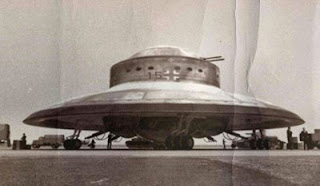Let's re-enter the lost world with another installment of my issue by issue examination of DC Comic's Warlord
, the earlier installments of which can be found here...
Warlord (vol. 1) #73 (September 1983)
Written by Cary Burkett with Jennifer Reinhold; Penciled by Dan Jurgens; Inked by Dan Adkins
Synopsis: When last we left our hero, Morgan was unconscious in the grip of a carnivorous tree, and Scarhart was approaching to kill him! Scarhart raises his axe to strike, but he’s distracted by the attack of flying reptiles.
Morgan awakens and manages to free himself. He decapitates one creature, but notices Scarhart is pinned by another. Before he can run to help, the plant grabs him again. Only one chance:
Scarhart returns the favor by cutting Morgan free. Morgan decides they might as well join forces—even though Scarhart wants to kill the plague unicorn, while Morgan wants to take it back alive so an antidote can be made from its blood.
Tracking the unicorn, Morgan and Scarhart come across the camp of the itinerant Kaash’Ban. The folk and their animal companions agree to help them track the unicorn. If they find it, it will be none too soon, as Morgan starts to show signs of sickness.
Shortly, they get word that the unicorn has been found:
They rush to place only to find the unicorn already being sucked into a bog. Morgan lassoes it, but he’s too weak to pull it out. He appeals to Scarhart for help, but Scarhart has other ideas:
Morgan is about to give in to hopelessness when he realizes that Scarhart hasn’t gotten sick. The Kaash’Ban girl (who has taken an interest in Scarhart) mind-melds with him again to find a clue as to the reason: Scarhart drank from a secluded forest pool that seemed to invigorate him. He believed it to have healing properties as foretold by the legends of his people.
Our heroes return to Castle Deimos. Jennifer opens a portal back to Scarhart’s world. He and Morgan jump through, then quickly make their way to the pool. Morgan fills flasks with its waters. Suddenly, a reptilian guardian rises from its depths! Morgan doesn’t have the time…
Back in Castle Deimos, the water of the pool indeed cures Jennifer, Morgan, and Shakira.
Scarhart and Shakira take an instant shine to each other and decide to travel with the Kaash’Ban for a bit. Shakira tells Morgan: “Don’t worry, Morgan…our paths will cross again.”
Morgan smiles and replies that he’s certain they will.
Things to Notice:
- Not for the first time, Shakira leaves Morgan for another guy.
- Team Warlord seem awful quick to assume drinking some water in the forest is what kept Scarhart from contracting the plague.
- The Kaash'Ban make a return appearance after last being seen in issue #63.
Notes:
This was my first issue of Warlord. At the age of 10, I bought it off a spinner rack at a Suwannee Swifty store in Southwest Georgia. I still have the copy.

























































